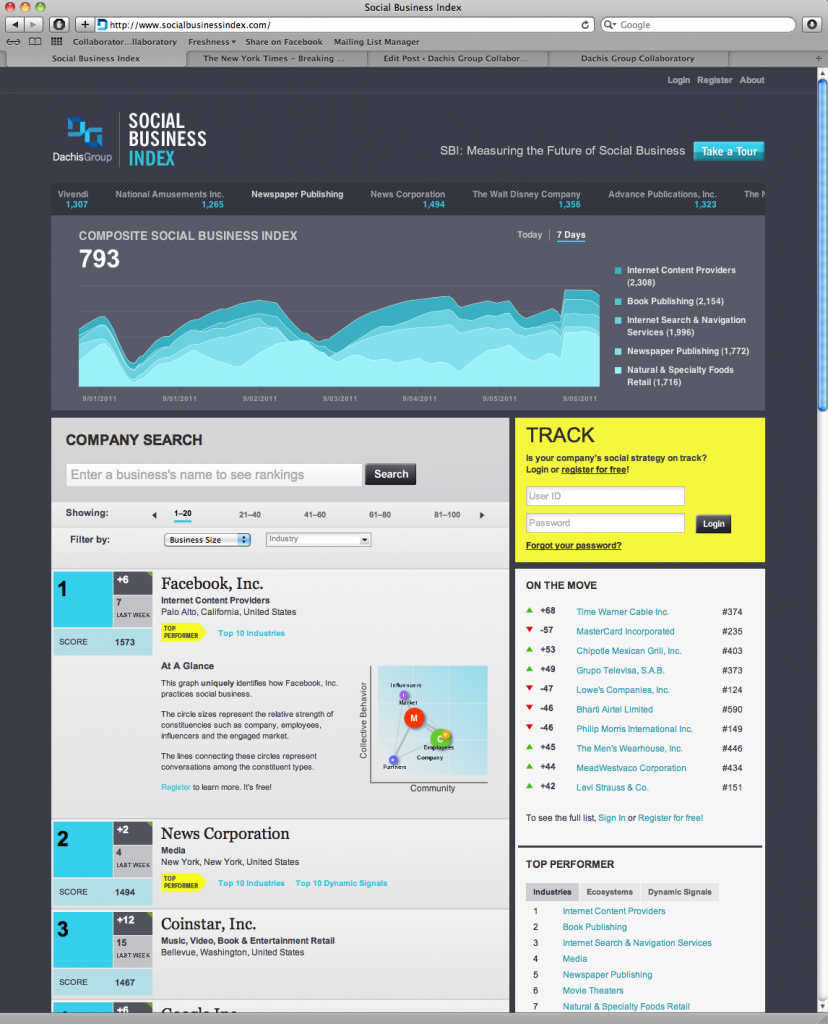“I’ll tell you what’s wrong with it… It’s dead!”
So, which is it dead or not dead? There is so much confusion in the market about what “Social Business” is, it might as well be a dead parrot (too). And there is no shortage of people who come at this conversation with a perspective that simply adds more confusion based on their orientation or specific economic agenda.
No one knows this struggle better than I. I had lost the battle to preserve “Social Business” for its original owner, Muhammad Yunus, who by-the-way is trying to solve global poverty and a Nobel Peace Prize winner, sometime in 2009 in discussions with the social cognoscenti. My former employer and friends at the Dachis Group had settled on repurposing Social Business to describe the evolving phenomenon, and after I was acquired, I too fell in line eventually rebranding the Council I had created for early adopters of Enterprise 2.0 to become “The Social Business Council.”* I think the goal had always been to create a singular view for the market, and I supported the direction. But, even as I was leaving Dachis Group in the summer of 2012, we took a pulse to see how many of the early adopters had fully integrated their internal social collaboration initiatives (collaboration and learning) with their external social media marketing initiatives (sales and marketing), and wished we hadn’t asked. I knew the number would not be high, but I was literally shocked to see the response was nearly zero. The actual number was 4%. The number was so startling that when I presented it at a Jive user’s group meeting here in Texas, people were somewhat alarmed. So, I repurposed the figure in the report to reflect how many people said they had plans to do it, but currently had not done it.
The reality that surrounds this issue is we are really talking about two different planets that share the same language based on the principles of the early web 2.0 phenomenon and open web. But, anyone who’s played in both these camps will readily acknowledge that a digital strategist or VP of Consumer Strategy has no idea what social collaboration is inside the enterprise and most likely spends his/her entire day in email, teleconferences, meetings, and ppt. And, someone who’s running an internal enterprise social network has no idea who the top players are in SMMS (or what that acronym even means). The problem is becoming somewhat unwieldy, however, because people who do not know better can easily confuse expertise in one area with the other. Some of the senior enterprise folks in our network are facing career track issues with this right now. Further, there’s now evidence of attempts at rationalization taking place, trying to shoe-horn the whole shebang into a singular phenomenon. Nice try, and if it leads to changing the world, we’re for it.
One of our Change Agents, Richard Martin, pointed out that Nilofer Merchant side-stepped the issue quite neatly in her book 11 Rules for Creating Value in the Social Era: “You might wonder why I’m not using Enterprise 2.0 (E2.0) or social business (#socbiz) terminology. Enterprise 2.0 primarily focused on the tools necessary to create information flow, based on the idea that we can do better if we share information freely. Social business (#socbiz) was a term first created by Muhammed Yunus, but more recently has been a popular way to describe the way companies function and generate value for all the constituents (stakeholders, employees, customers, partners, suppliers)—the idea being that we add a social overlay to the existing structural framework. Here, I pose a new question with the notion of Social Era: in what ways can we structure things entirely differently to create more value in the context of our times, to be fast to market, to be fluid in mind-set, to be flexible in how we organize, deliver, and create value?”
She nails it in that “new” question.
We’ll be talking about some of those answers in an upcoming webinar we are doing next week in cooperation with our sponsor partner, Socialcast by VMware. The webinar will provide a reality check on where social is today, but more importantly, will talk about the underlying trends that are driving enterprise-sized businesses to become more network-based and adaptable. You’ll have the pleasure of listening to thought leaders Simon Terry and Harold Jarche share their insights on why social matters now more than ever before. Simon will explain how we got here, what the problem is in the market, and Harold will explain ways we can begin to address these problems today. We’ll cover a few case studies and have lots of time to do Q&A with webinar participants, so please sign up and join us. We look forward to your participation.
Webinar: Moving Forward with Social Collaboration
Date: December 12, 2013
Time: 11:00 a.m. EST
This webinar kicks off a series of projects we’ll be doing with Socialcast to educate the market. We have a lot more in store as we roll into 2014 too. As always, thanks for your support for the great work we’re doing at Change Agents Worldwide. You can support us by tweeting (@chagww and #caww) about us, liking us on Facebook, following on on G+, joining our public community on G+, and following our updates on LinkedIn. Of course, don’t be shy about joining us as well. Things are going to change in 2014 for new members, so if you’ve been considering joining, now would be a good time.
Last thing – Deloitte and MIT Sloan Management Review are running a fairly good survey on trying to get to the bottom of some of these issues and to mitigate some confusion in the market. I highly recommend you complete the questionnaire. We’re also very excited about Change Agent Jane McConnell’s Digital Workplace results which will be out in early 2014, as well.
See you next Thursday! And, as always, interested in your comments.
*Sadly, one thing is deader than a dead parrot: The Social Business Council. Dachis Group shut it down this month. It was a great resource for many early adopters and fans, and its legend lives on in the halls of Wikipedia if you’d like to update the page.

















